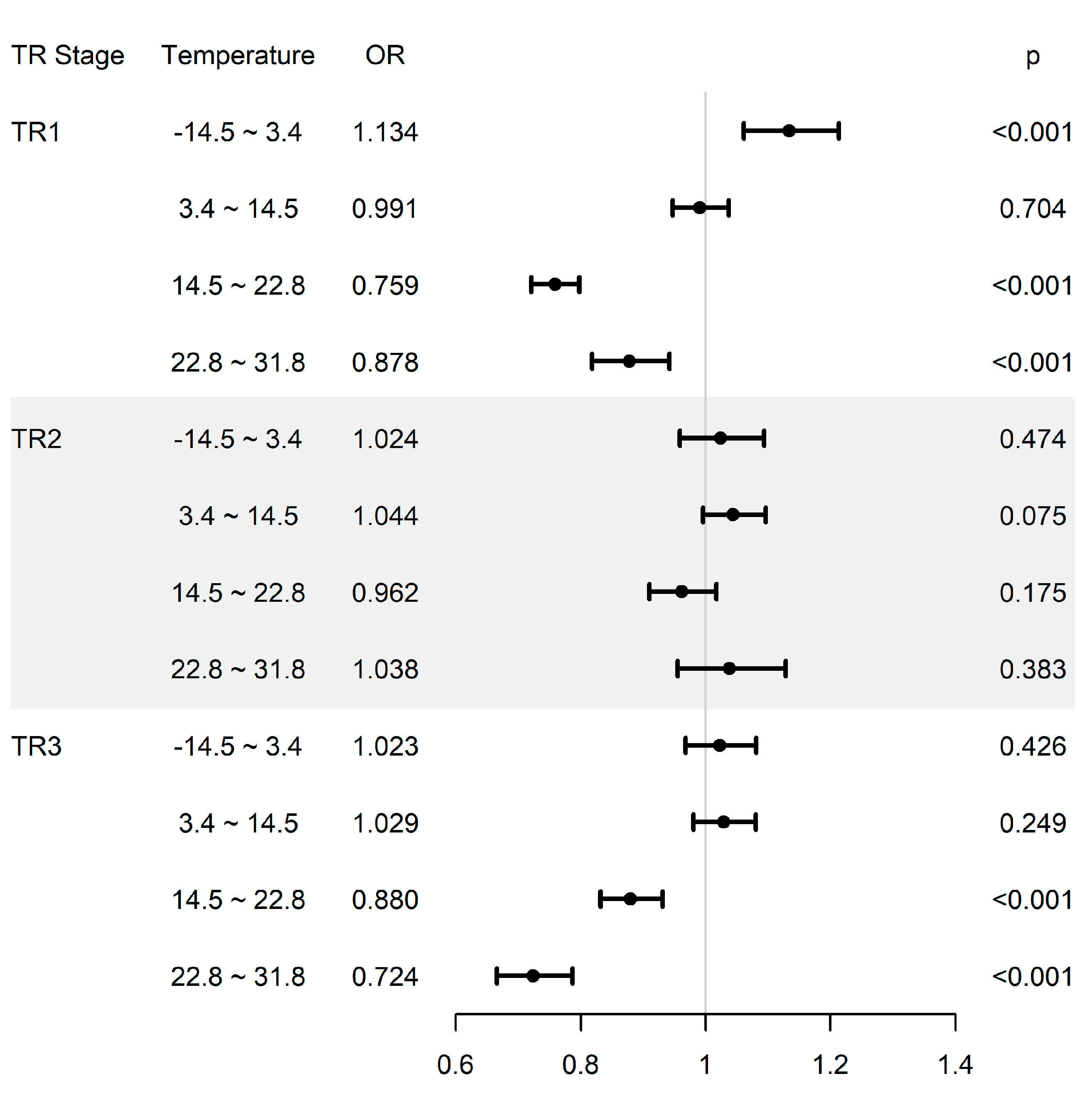하은희 (Eun-Hee Ha) 교수님의 연구 The Combined Effects of Fine Particulate Matter and Temperature on Preterm Birth in Seoul, 2010-2016가 Int J Environ Res Public Health에 출판되었습니다. 축하드립니다!
Journal DOI: https://doi.org/10.3390/ijerph18041463
Abstract
Background: Preterm birth contributes to the morbidity and mortality of newborns and infants. Recent studies have shown that maternal exposure to particulate matter and extreme temperatures results in immune dysfunction, which can induce preterm birth. This study aimed to evaluate the association between fine particulate matter (PM2.5) exposure, temperature, and preterm birth in Seoul, Republic of Korea. Methods: We used 2010–2016 birth data from Seoul, obtained from the Korea National Statistical Office Microdata. PM2.5 concentration data from Seoul were generated through the Community Multiscale Air Quality (CMAQ) model. Seoul temperature data were collected from the Korea Meteorological Administration (KMA). The exposure period of PM2.5 and temperature were divided into the first (TR1), second (TR2), and third (TR3) trimesters of pregnancy. The mean PM2.5 concentration was used in units of ×10 µg/m3 and the mean temperature was divided into four categories based on quartiles. Logistic regression analyses were performed to evaluate the association between PM2.5 exposure and preterm birth, as well as the combined effects of PM2.5 exposure and temperature on preterm birth. Result: In a model that includes three trimesters of PM2.5 and temperature data as exposures, which assumes an interaction between PM2.5 and temperature in each trimester, the risk of preterm birth was positively associated with TR1 PM2.5 exposure among pregnant women exposed to relatively low mean temperatures (<3.4 °C) during TR1 (OR 1.134, 95% CI 1.061–1.213, p < 0.001). Conclusions: When we assumed the interaction between PM2.5 exposure and temperature exposure, PM2.5 exposure during TR1 increased the risk of preterm birth among pregnant women exposed to low temperatures during TR1. Pregnant women should be aware of the risk associated with combined exposure to particulate matter and low temperatures during TR1 to prevent preterm birth. View Full-Text


